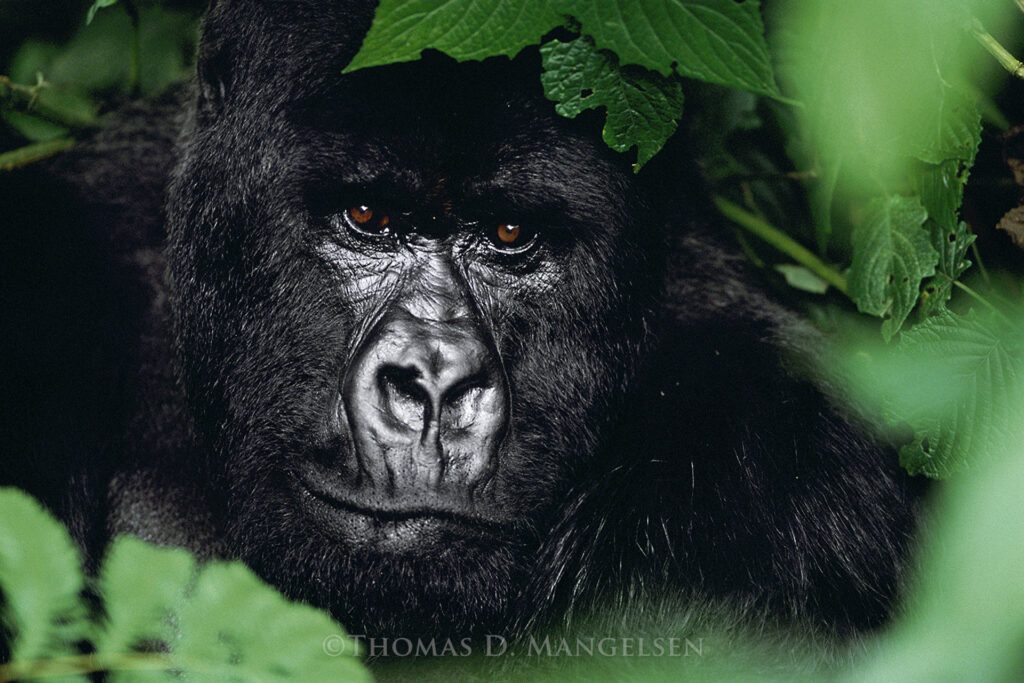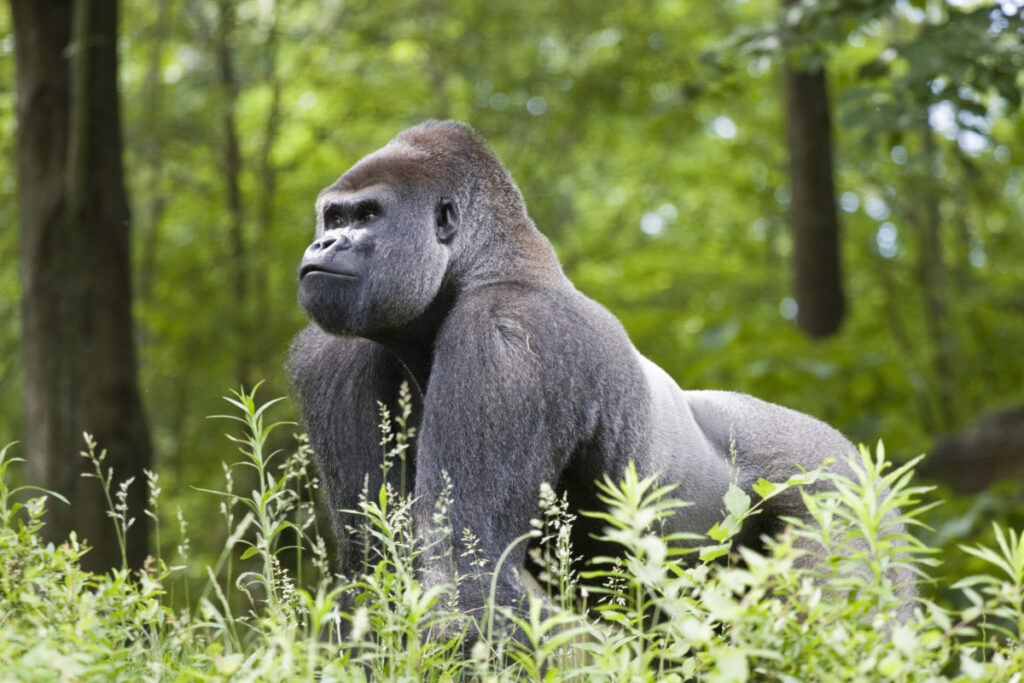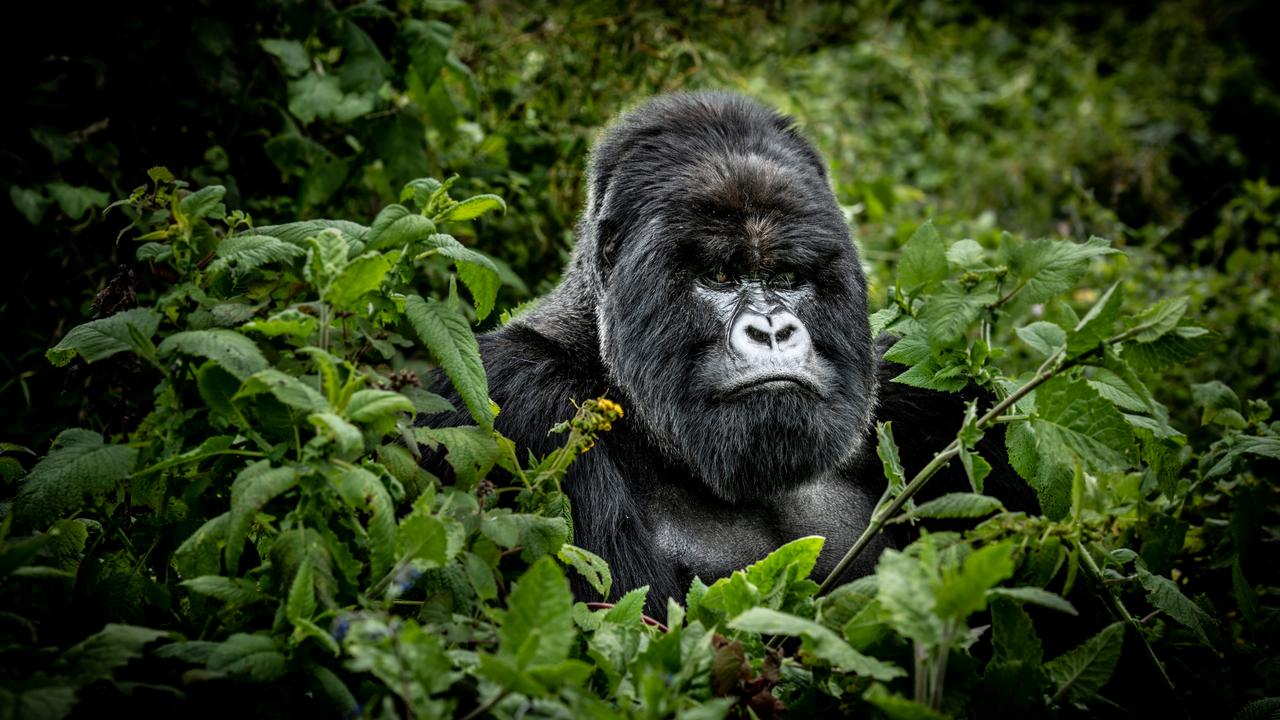Imagine creeping through the mist-shrouded bamboo forest of Volcanoes National Park at dawn, heart pounding in anticipation. Suddenly, a massive silverback gorilla emerges just a few meters away — a truly mesmerizing moment that many adventurers describe as “a moment filled with awe, silence, and connection”. This is what a Gorilla Tour Rwanda promises: an up-close encounter with one of our closest animal relatives in the wild. Rwanda stands out as the ultimate destination for this life-changing wildlife journey. In this post, we’ll explore why a Gorilla Tour Rwanda is unmatched, what makes it so rewarding, and how to plan your trip for an unforgettable adventure.
Why Gorilla Tour Rwanda is Unmatched
Volcanoes National Park is the beating heart of any Gorilla Tour Rwanda. Just a 2- to 3-hour drive from Kigali, this lush park in the Virunga Mountains is home to all of Rwanda’s habituated mountain gorilla families. Compared to other destinations, Rwanda offers exceptional infrastructure: all gorilla trekking permits are issued in advance, and experienced park rangers accompany every trek. On trek day, rangers guide small groups (usually just eight people) into the jungle to keep the encounter intimate.
The payoff is immediate and profound. Deep in the misty forest, the first glimpse of a gorilla family — perhaps a silverback calmly thumping his chest or mothers cradling playful infants — is nothing short of magical. The emotional impact is hard to overstate. Many visitors are struck by the gorillas’ intelligence and gentle expressions; it’s so moving that “visitors often leave with tears in their eyes,” describing the experience as deeply humbling. In short, a Gorilla Tour Rwanda isn’t just another safari — it’s an intensely personal, heart-stirring wildlife encounter.

What Makes Gorilla Tour Rwanda So Rewarding?
The unique thrill of a Gorilla Tour Rwanda comes from its unparalleled intimacy. For one hour, you share space with an entire gorilla family in their habitat. You may witness a silverback strategically chest-beating in a slow, powerful rhythm, see infants tumbling playfully through vines, or watch a mother meticulously grooming her baby. All the while, you remain eerily quiet except for the soft clicks of cameras, absorbing the gorillas’ world. Many trekkers report feeling a profound connection — “meeting gorillas face to face… touches the soul,” as one account puts it.
This trek is rewarding not just on an emotional level, but also because of its conservation impact. Mountain gorillas are a rare success story: thanks to decades of protection, anti-poaching patrols, and community programs, their numbers have climbed from a few hundred in the early 1980s to over 1,000 today. Rwanda alone is home to roughly 30% of the 1,063 mountain gorillas left in the world. Every dollar of the roughly $1,500 permit fee goes largely to the park rangers, research and facilities, and community development projects. In other words, by trekking with gorillas, you’re directly funding the very programs that keep these gentle giants safe.
There’s also a cultural side to the adventure. Your guides and trackers are often local residents who have grown up around these forests. Many treks offer the option to hire porters (around $10) to carry extra gear – this not only makes the hike easier but also provides vital income for local people. Our itineraries include a visit to the nearby Iby’Iwacu Cultural Village or an encounter with the Batwa community, highlighting how wildlife tourism enriches Rwanda’s culture and people. In this way, a Gorilla Tour Rwanda becomes a rewarding experience that touches on nature, conservation, and community.
Planning Your Gorilla Tour Rwanda
Permits. To trek gorillas in Rwanda, each visitor must purchase a special permit. For most international travelers, this permit costs about $1,500. (Permits are cheaper for African citizens and even more for East Africans.) Permits are limited and fill up quickly, so plan early. You can book permits through our website. Park authorities recommend reserving your permit 1 month in advance, especially for the dry-season peak months.
Best Time to Go. Rwanda’s high-altitude rainforest can get rain any month, but the driest periods are ideal for trekking. The best windows are June–September and December–February. Trails tend to be muddier in the long rainy season (March–May) and the short rains (October–November), but visiting then means fewer crowds. The landscape is lush year-round, so even shoulder-season visits are rewarding (just pack extra rain gear and allow a bit more hiking time).
Health and Fitness. Gorilla trekking involves a vigorous hike over steep, slippery terrain. You should be in moderate fitness – expect anywhere from 30 minutes to 1–2 hours of hiking, depending on how far the gorillas have traveled that day. The park is at about 2,500–3,000 meters above sea level, so altitude may make the trek more challenging. Be sure to bring plenty of water and take it slow if you feel breathless.
Before you go, check with your doctor about vaccinations. Yellow fever vaccination is strongly recommended (and often required upon entry to Rwanda). Other recommended immunizations include tetanus, hepatitis A, typhoid, and malaria prophylaxis, since Rwanda has some malaria risk. And don’t forget routine shots like MMR. In short, a quick health consultation can give you peace of mind and protect both you and the gorillas.
Gear and Packing List. Pack for wet, cool conditions. The essentials include waterproof hiking boots with good ankle support, and a lightweight rain jacket or poncho (it can drizzle even in the “dry” season). Long-sleeved shirts and pants protect against nettles and insects, and gloves are surprisingly valuable for gripping vines and avoiding scratches. Bring a hat and sunglasses for sunbreaks, and cover sunscreen (even in the forest). Carry at least 1–2 liters of water and some snacks for energy. A camera (no flash) is a must to capture memories. Finally, pack copies of your passport, permit confirmation, and any medications in a daypack you can easily carry.
Sample Packing List:
- Waterproof hiking boots and gaiters
- Light rain jacket or poncho
- Long-sleeved shirt, long pants, and gloves
- Hat, sunglasses, and sunscreen
- Insect repellent and personal medications
- Snacks and 1–2 liters of water
- Camera (no flash) with extra batteries
- Documents: passport, printed permit, visa
A Day on a Gorilla Tour Rwanda

Your Gorilla Tour Rwanda day begins before sunrise. After breakfast, you’ll drive to the park headquarters at Kinigi and arrive around 7:00–8:00 AM. There, rangers give a short briefing (often with local coffee and music) to review the rules and introduce you to your gorilla family assignment. Just 8 people are assigned per family, along with a lead guide and several trackers.
Then the adventure begins. You set off on foot along forest trails. The hike can be steep and muddy. Some groups spot their gorillas quickly (in half an hour to an hour), while others trek for several hours until trackers confirm a sighting. Along the way, you may traverse streams, climb narrow ridges, and push through dense bamboo – your guides will be helping cut a path with machetes when needed.
Suddenly, the forest grows quiet: the trackers have found the gorillas. You leave sticks behind and slowly approach. There they are — perhaps a big silverback reclining on a mossy log, mothers feeding on bamboo leaves, youngsters wrestling playfully. You settle down at a respectful distance (at least 7 meters away) and spend the next hour observing this family. Cameras click softly; no talking is allowed. You might witness a silverback chest-beat, or simply sit and lock eyes with a curious infant. It’s an experience described by many as otherworldly and deeply moving.
Your ranger is always nearby, quietly watching for any signs of stress (and keeping everyone safe). After the hour ends, the ranger signals that it’s time to leave. As you hike back down the mountain, you’ll find it hard to stop talking about every detail: the gentle eyes of the gorilla, the mist swirling through the trees, and the shared smiles in your group. A Gorilla Tour Rwanda delivers sights, sounds, and emotions that truly stay with you.
Tips for an Unforgettable Gorilla Tour Rwanda
- Observe etiquette. Always keep at least 7 meters distance and move slowly. Stay quiet, do not point or shine lights, and never use flash photography. Remember that these are wild, endangered animals — the park’s rules exist to keep both you and the gorillas safe and calm.
- Listen to your guides. Your guide and rangers know these gorillas and the forest intimately. Stay with the group at all times, and follow their instructions without hesitation.
- Hire a porter. For about $10, a local porter can carry your backpack and steady you on slippery slopes. This not only lightens your load but also provides income for the community — a win-win.
- Pack for comfort. Expect muddy trails and changing weather. Waterproof boots, gaiters, and an extra pair of socks are wise. Carry a small daypack with water, snacks, and a light layer for after the trek.
- Manage expectations. Gorilla trekking is never guaranteed by a set schedule. If the gorillas have moved deep in the forest, you may hike longer; if they are nearby, the trek is shorter. Be prepared for a range of outcomes, and remember that the experience of trying is itself an adventure.
- Support local communities. Consider visiting Iby’Iwacu village or buying souvenirs from local artisans. Tips and purchases help reward the people who make gorilla tourism possible, ensuring that your trip benefits Rwanda’s people as well as its wildlife.
Conclusion
A Gorilla Tour Rwanda is more than just a hike — it’s an encounter that touches the heart and soul. Standing just meters from a wild gorilla family in the lush Virunga rainforest, feeling their calm presence, and knowing you’ve helped protect their future makes this truly one of the most rewarding wildlife adventures on Earth. If you’ve ever dreamed of a journey that will change your perspective, now is the time. Book your Gorilla Tour Rwanda today! Visit Rwanda’s gorilla permit portal or Volcanoes National Park’s official website to secure your permit well in advance, and prepare for a once-in-a-lifetime adventure.
